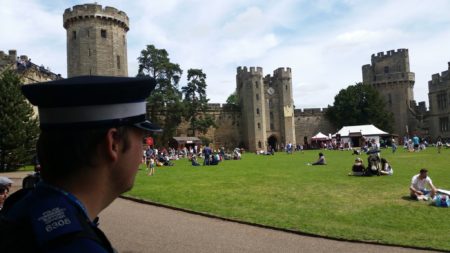 It is part of the Commissioner’s role to hold Warwickshire Police’s Chief Constable to account, so that the service the force is delivering is both efficient and effective and meets the public’s needs.
It is part of the Commissioner’s role to hold Warwickshire Police’s Chief Constable to account, so that the service the force is delivering is both efficient and effective and meets the public’s needs.
To ensure this is the case, the Commisisoner holds regular holding to account meetings with the Chief Constable Martin Jelley and other Chief Officers. You can read more about these discussions in our ‘Holding the Police to Account’ section.
While the Commissioner does not make decisions around operational policing, it is his role to scrutinise the services delivered by Warwickshire Police to ensure they meets the needs of local people. Ultimately, the Commissioner holds the Chief Constable to account for delivering the Police and Crime Plan and building increased levels of trust, confidence and understanding of policing within local communities.
“Warwickshire Police’s vision is ‘protecting people from harm’, an aspiration which I share along with the Chief Constable’s desire for the force to become ‘great at protecting the most vulnerable’. Together, these aspirations underpin my Police and Crime Plan.”
– PCC Philip Seccombe

PCSO Matt Hall at Warwick Castle
Warwickshire Police serves a growing and diversifying population of more than 554,000 people, covering some 763 square miles. While Warwickshire is predominantly rural, it also contains some densely populated urban areas and many market towns. The county is also at the heart of the region’s road and motorway network, meaning close co-operation with neighbouring police forces and other local authorities is essential.
The force is in a formal strategic alliance with West Mercia Police. This means both forces share resources allowing them to provide the most effective service to the public, whilst maintaining their own identity.
Each force has its own Chief Constable and Deputy Chief Constable but below this level the functions of the forces are combined. Two Assistant Chief Constables (Local Policing and Protective Services) and three Directors (Finance, Enabling Services and Transformation) are responsible for the delivery of policing services across both force areas.
In a typical day the policing alliance deals with around 1,150 incidents (as broken down below). That’s over 420,000 a year. These incidents include all those associated with traditional policing, such as violent crimes, burglaries, missing people and serious road traffic accidents.

Text Version:
233 Reported crimes, 177 Anti-social behaviour incidents, 11 Burglaries, 11 Road traffic collisions with casualties, 93 Thefts, 50 Violent Crimes, 69 Arrests, 8 Missing persons cases, 40 Stop and searches, 25 Mental Health incidents, 1,151 Incidents Recorded.
Warwickshire Police Structure
The force is structured into the following departments:
Chief Officers
The Chief Constable and Deputy Chief Constable are responsible for the overall control and direction of the force and liaison with the wider Alliance Chief Officer team.
Find out more about the Chief Officers
Local Policing
Policing is delivered across policing areas based on local and county boundaries. In Warwickshire it is led by a local Chief Superintendent responsible for local policing – including Safer Neighbourhood Teams, response policing, local crime investigation and harm reduction teams.
Find out more about Local Policing
Protective Services
Protective Services contains Crime Management, Forensics Services, Intelligence, Major Investigations, Operations, Protecting Vulnerable People and Specialist Operations.
Find out more about Protective Services
Enabling Services
The Enabling Services department incorporates all of the functions which provide business support to the policing alliance. This is made up of People Services, Legal Services, Performance, Corporate Communications, ICT, Business Support and Transport.
Find out more about Enabling Services
Finance
The Finance department is made up of accountancy, financial services, financial management, business change, contracts and procurement. These business functions provide support to both Warwickshire Police and West Mercia Police.

